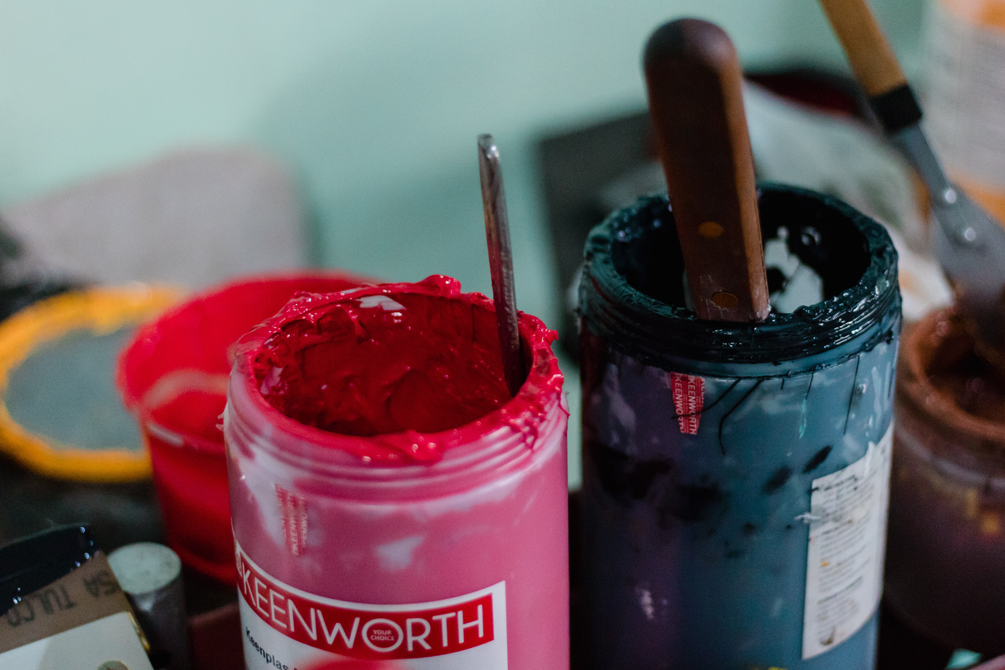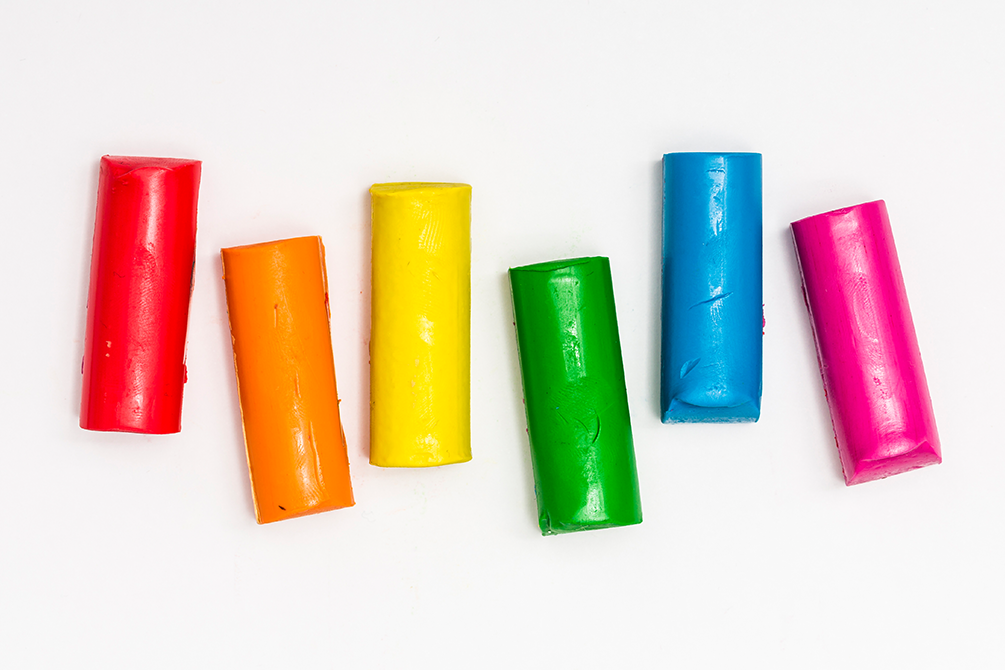You must be having that one t-shirt or a hoodie which you loved in the first go, maybe because of the color or design used. Did you ever think about what grabbed your attention?
There are lots of factors which affect when printing various t-shirts. One needs to take care of multiple things like budget, number of orders, printing methods, inks, and more. Deciding on all these things is important to ensure that the final product is durable, resistant to frequent wash; stretching design doesn’t break, and grabs customers’ attention.
To make sure these things are perfect, inks have a vital role to play. The type of ink you use depends on the fabric of your choice. Varieties of inks are available in the market, out of which water-based inks and plastisol inks are favorite of many printing business owners. Often, people wonder about the difference between them. So, in this article, we will discuss water based vs. plastisol and which is better.
Before going into the difference between screen printing water-based ink vs. plastisol, here’s a quick brief about each of them:
What is plastisol printing?
They are the most common types of ink for t-shirt printing. It consists of PVC materials and is very popular for screen printing. It is widely used for creating opaque designs on dark fabrics. Additionally, it does not dry out if left on the screen for a long duration. Hence, you will need to cure it using Flash cure units. The uniqueness of it, the ink sits on the top of the fabric instead of mixing with the fibers.
What is water based ink?
If you want soft, breathable designs, then water-based ink is the best choice. Instead of sitting on the top of the fabrics, it mixes and results in soft prints. Many water-based inks have co-solvents in them, such as petroleum solvents. They are mainly preferred because it decreases the time and heat necessary for the curing process.
Each of these ink has a unique purpose to serving and can be used in a dedicated type of fabric. Let us see some of the usages of both of them:
Plastisol ink
Plastisol inks are mostly useful for textiles, garments, and specifically opaque prints. They do not harm the fabrics like other prints and make the final product vibrant and eye-catching. Below are some of the major advantages of plastisol ink:
- They do not dry out
- Easy to print
- Suitable for any material
- Provides vibrant colors
- Environmental friendly
Water-based ink
Water-based ink is widely used for making soft and no feel prints. You can print either on white or light garments. It is rarely useful for dark garments. They require a large drying machine for curing. Below are some of the advantages of water-based ink:
- It has high-speed and requires roll-to-roll printing
- High quality, soft and sharp prints
- Environmental friendly
- Prints produced are long-lasting
Going further, we will see water based vs. plastisol. Let us explore them in research and see what sets each of them apart.
Screen Printing Water Based Ink vs. Plastisol
Soft and Vibrant Prints
This is one of the major advantages of water-based ink over plastisol. The printed t-shirts are soft and vibrant. The primary reason behind this is the solution is not completely free of plastic but has water solvent. Further, the solvent absorbs in the fabrics leaving soft prints. When the ink cures the water-based solvents disappear and leave pigmented binders compound.
On the other hand, plastisol prints are plastic-based. Its main component is PVC particles or other polymers which have plasticizer or liquid plastic. When you heat it at a high temperature or cure it, it becomes solid and forms a plastic layer on the fabric. Hence, this does not result in having soft and vibrant prints on various fabrics.
Use of Discharges
Discharge ink is a chemical which works as a bleaching agent for garments. It is mainly used with water-based ink. Mostly useful on dark garments and works effectively on 100% cotton fabrics. When you discharge the dye from the garment, you are creating a white base. Whereas, when printing dark materials using plastisol ink, you will need to add a layer of white ink to create an opaque under-base.
This results in having thick layering of colors on the top. There are techniques to decrease the ink usage but still having soft prints with plastisol becomes difficult. Hence, here too, water-based ink wins if your concern is less usage of ink and soft prints.
Better Color Vibrancy
If your user wants vibrant colors on their t-shirts, plastisol ink is your answer. Especially when working with dark garments, plastisol colors produce vibrant and saturated colors. It is one of the significant reasons why plastisol inks are leading.
Plastisol inks are 100% solid and plastic-based and stick firmly on the fabric even after curing. Mostly, it creates an opaque layer for bright prints, bold and fluorescent colors.
Whereas, in water-based inks, dark garments have limited use of vibrant colors. They are not transparent compared to plastisol ink but are also difficult to produce vibrant colors under a white-base. Additionally, water-based inks work best with vintage looks. If you don’t want your fabric to have any vibrant colors and prefer a soft hand, then water-based inks are your go-to solution.
Color Accuracy
When we talk about color accuracy, nothing can surpass plastisol inks, which provides vibrant colors too. When using plastisol inks, it is easy to find the desired colors easily. For example, if you need any particular color for your company’s t-shirts for branding purposes, then plastisol ink won’t let you down.
Whereas, with water-based ink, the result in color may differ. Many changes are made to it but, it still needs to mature its color palette. Looking at the color vibrancy only, you can easily come to know the difference.
Color accuracy is very important for the printing business. Hence, the match between water-based inks vs. plastisol in color accuracy, plastisol ink wins.
Durability
When it comes to durability between water-based vs. plastisols, it’s a tie. Talking about water-based inks, the ink mixes with the fabric, which lasts for longer periods of time. Similarly, the plastisol inks form a layer and sticks tightly with the fabric, making it last longer.
Remember some of the key things which can affect durability:
- If the print is not cured properly, then regardless of the ink you use, your print will have durability issues.
- If the ink’s quality and the type of fabric used is not considered, it might affect the durability.
- Lastly, the care of the garments has a huge role to play. If they are washed every day in heavy detergents or hot water, the durability will be affected.
Breathability
Breathability means the ability of the moisture to move between the fabrics. The water-based ink is absorbed with the fabric, there are many openings left in the fabric, giving more chances for the moisture to move. Whereas the plastisol inks form layers and sticks with the fabric, leaving tiny gaps unfilled.
Flexibility
Here flexibility means, using inks on different fabrics, ink additives, and applying various heating conditions. This is when plastisol inks win. You can use almost any fabric type, additives, heating conditions using plastisol inks, and the result will be the same.
Whereas water-based inks require 100% cotton materials only. When working with synthetic fabrics, the result will not be as expected because it does not blend properly. Thus, if you are using water-based inks, then you have fewer options to try different materials.
Eco-friendly
Currently, there has been a lot of demand for eco-friendly materials. Looking at this, the ink industry is selling more water-based inks.
Water-based inks too contain plastics in the form of acrylics and other binders but are PVC free. It uses solvents that evaporate and leave pigmented binder compounds on the material. Whereas plastisol inks consist mainly of PVC materials, i.e., plastics, we all know the impact on the environment. With the increasing demand for eco-friendliness, manufacturers are trying to find an alternative to PVC for inks. Until we find an alternative, water-based inks will rule in the vertical of eco-friendly prints.
Cost
Water-based ink is everyone’s favorite because of the soft handprints, but it is a very costly solution. In fact, many printing businesses provide this solution as a premium service. Whereas plastisol ink is affordable and easy to work with. Additionally, it is difficult to work with water-based inks compared to plastisol prints. Water-based inks require a specific type of fabric, whereas plastisol ink can work on any fabric. Thus, if we compare plastisol vs. water based inks cost-wise; plastisol ink is an affordable solution.
Plastisol vs. Water Based Ink: Which you should Use?
Screen printing water-based ink vs. plastisol is an ongoing debate and often leads people to ask which one is better. Here, I would suggest, both of them are best in their own ways and have a role to play in the printing industry. Multiple things need to be considered while planning to purchase either of the inks.
If flexibility, vibrancy, and easy process is a priority for you, then plastisol inks are your answer. They are affordable, long-lasting, and provide better prints. Whereas, if your main fabric is cotton and needs a soft hand feeling, water-based inks are your answer. Lastly, if the cost is not a major factor for you and you don’t want to select either of them, you can purchase both the inks and use them.
Many businesses will recommend you to use any one of them. But, depending on your need and customer requirements, define the type of ink you want to use. Consider things like; budget, types of prints, customers’ needs, eco-friendly solutions, and more. Taking all these points into consideration, decide which inks you want to go with.
Conclusion
Both inks are vital in the printing industry and have their fair share of contribution. When deciding to buy either of them, try to understand them in detail and then decide. Being a print business owner, it is important to have knowledge about the ink types, which one to use, and why.
Apart from this, if you are struggling with fulfilling your customers’ constant needs, last-minute changes in designs, and constantly communicating with them. Then we have a solution for you.
Product Designer Tool by BrushYourIdeas
Our software easily integrates with your website and provides customers the ease to create their designs. It is a feature-rich library, multi-language support, mobile-first approach, making our tool stand out from the crowd. To know more about our solution, reach out to us, and our team will be happy to help you.
All product and company names are trademarks™, registered® or copyright© trademarks of their respective holders. Use of them does not imply any affiliation with or endorsement by them.










Follow with us